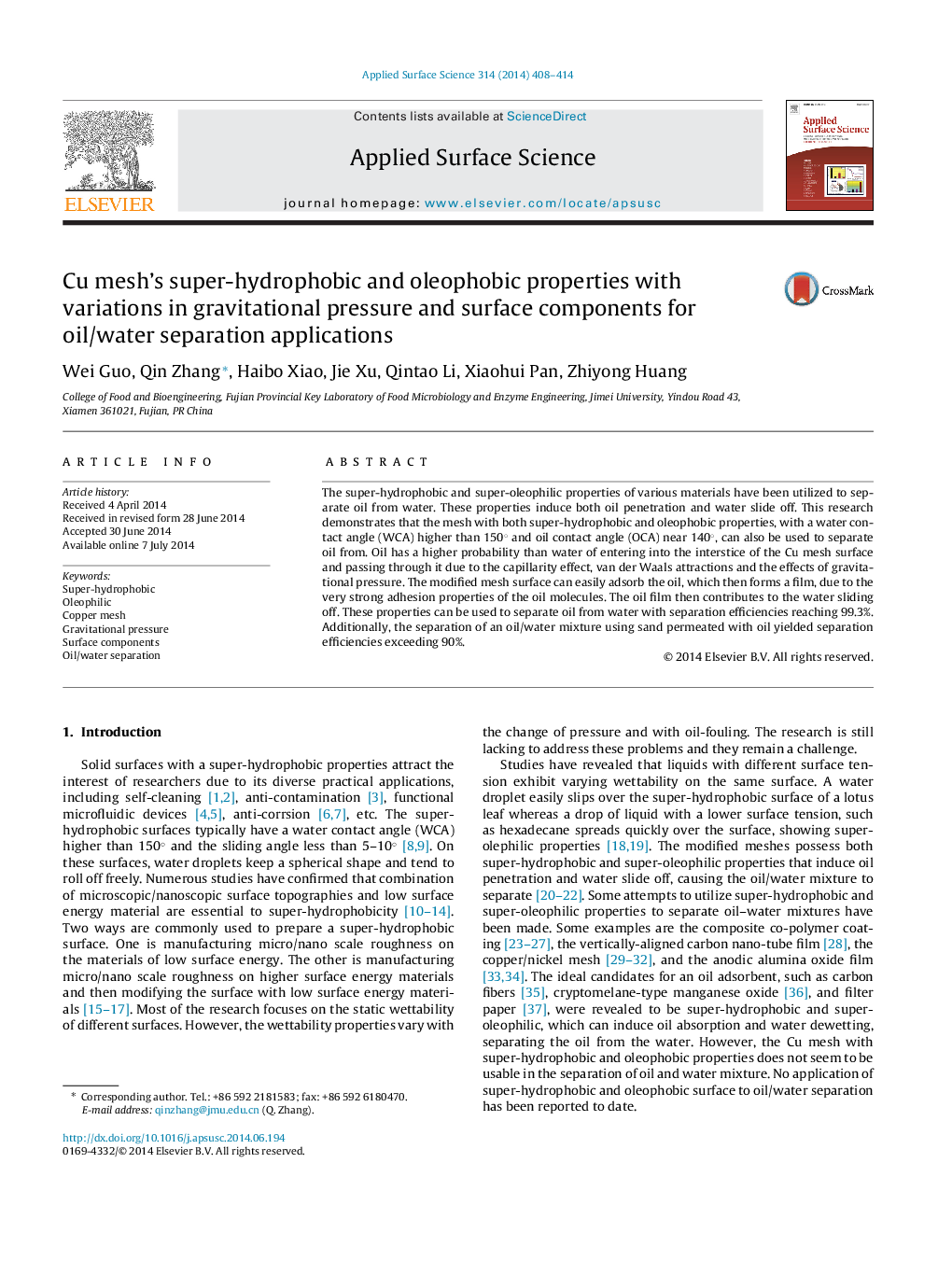| Article ID | Journal | Published Year | Pages | File Type |
|---|---|---|---|---|
| 5358376 | Applied Surface Science | 2014 | 7 Pages |
Abstract
The super-hydrophobic and super-oleophilic properties of various materials have been utilized to separate oil from water. These properties induce both oil penetration and water slide off. This research demonstrates that the mesh with both super-hydrophobic and oleophobic properties, with a water contact angle (WCA) higher than 150° and oil contact angle (OCA) near 140°, can also be used to separate oil from. Oil has a higher probability than water of entering into the interstice of the Cu mesh surface and passing through it due to the capillarity effect, van der Waals attractions and the effects of gravitational pressure. The modified mesh surface can easily adsorb the oil, which then forms a film, due to the very strong adhesion properties of the oil molecules. The oil film then contributes to the water sliding off. These properties can be used to separate oil from water with separation efficiencies reaching 99.3%. Additionally, the separation of an oil/water mixture using sand permeated with oil yielded separation efficiencies exceeding 90%.
Keywords
Related Topics
Physical Sciences and Engineering
Chemistry
Physical and Theoretical Chemistry
Authors
Wei Guo, Qin Zhang, Haibo Xiao, Jie Xu, Qintao Li, Xiaohui Pan, Zhiyong Huang,
